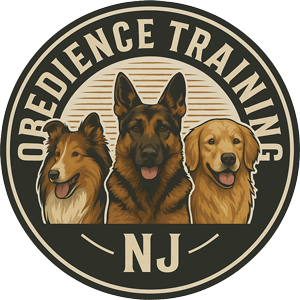When most people think about dog training, they imagine “work time” as being separate from “playtime.” Training feels like discipline, structure, and commands, while play feels free, relaxed, and joyful. But what if you could combine both—so your dog learns faster, stays engaged, and builds a deeper bond with you?
In reality, the most effective puppy training and adult dog obedience often happen when work and play merge into a single, exciting experience.
Why Play Belongs in Dog Training
There’s a saying: Do what you love and you’ll never work a day in your life. While most of us still feel “work” during rush hour, the truth is that enthusiasm fuels effort—and dogs are no different.
When you turn obedience into training games, you transform your role from a boring authority figure into the “most exciting game in town.” Play rewards good behavior, reinforces impulse control, and makes dog obedience training something your dog wants to participate in.
By blending play and obedience, you can:
- Keep your dog’s attention and focus in high-distraction environments.
- Build strong, positive associations with commands like sit, down, stay, and come.
- Increase reliability for recall training and leash manners.
- Make training enjoyable for both you and your dog.
Turning Play into Obedience
You can start with simple, fun activities:
- Ball toss for a recall – Call your dog to you, and reward success with a quick throw of their favorite ball.
- Impulse control with toys – Have your dog hold a down/stay while you toss a toy, releasing them only after they hold position.
- Recall away from temptation – With a long leash, throw a toy, call your dog back mid-chase, and reward them with a new throw when they return.
These games directly prepare your dog for real-life scenarios—calling them away from chasing wildlife, holding a stay when guests arrive, or ignoring distractions on walks.
Why the Dog Park Doesn’t Count as “Training”
Many owners think taking their dog to the park for playtime will burn energy and improve behavior. But unstructured dog park play doesn’t build obedience—it teaches your dog that the real fun happens away from you.
At the park, your dog learns to seek excitement from other dogs instead of you. Worse, you can’t control the temperament or health of the dogs present, and unregulated rough play often leads to injuries or fights.
For safe socialization and better results, your dog should see YOU as the primary source of fun and rewards—not a pack of unpredictable strangers’ dogs.
Play With Purpose: Structure + Fun = Progress
Games are fun because they have rules. In dog training, rules are essential:
- Set achievable challenges and increase difficulty gradually.
- Keep the goal in mind—obedience and self-control—not just excitement.
- Correct disobedience even in playful sessions, so “fun” never means “no rules.”
Structured play teaches your dog to obey commands even when excited. Over time, you’ll have a confident, well-mannered dog who associates training with joy—not stress.
The Real Power of Play in Dog Training
Incorporating play into your puppy training program or adult dog obedience lessons strengthens your bond, improves engagement, and builds a dog who can follow commands in any situation. Play isn’t a break from training—it is training, done in the most enjoyable way possible.
When training is fun, both you and your dog win. And the payoff is a dog that listens, responds, and loves working with you—whether in your living room, on a busy sidewalk, or in a high-distraction park.

